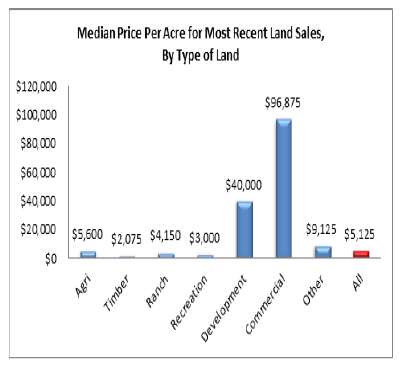Generally I work
counties in west central Georgia. The predominant land use is timberland with a
little farming and pasture land scattered in between. Soils are important but
not to the extent they are in agricultural areas where intensive farming and
irrigation are common practices. Because those land uses I don’t commonly deal
in, I will limit the discussion to timberland! I am a ‘Registered Forester’ and
the topic is important if you are looking for investment grade property.
There is a great
website whereby you can look at any property, then determine what are the
predominant soils. Following is the link to the site…
As an example, I
have included maps and information on property I own in Johnson County, GA.
Soil Map
Soil Map Info
The Soil
Information above includes the Map Unit, Map Unit Name and percent slope. From here
you can determine important characteristics such as limitations related to that
soil type and ‘Site Index’. The limitations are important to you because you
can determine depth to rock, prone to flooding, septic tank suitability and
other factors. If you are buying a large tract with the intent to build a
house, the ability to install a septic tank is important.
Soil Texture refers
to the amount of sand, silt and clay in the soils. Sand particles are larger
than silt, silt larger than clay. You need sand for root penetration and clay
to hold water. A soil with equal amounts of each is referred to as a ‘loam’. See the following 'soil texture triangle'.
Soil Texture Triangle
Let’s turn our
focus to ‘Site Index’. Site Index - is a term used in forestry to describe the
potential for forest trees
to grow at a particular location or "site." Site is defined in
forestry to refer to a distinct area where trees are found. Site index is used
to measure the productivity of the site and the management options for that
site and reports the height of dominant and co-dominant trees in a stand at a
specified age OR base age. In natural stands the age is generally 50, but in
planted stands or ‘plantations’ the base age is 25 (they are generally
harvested before age 50). Also, there is a different site index number for
different tree species. I only pay attention to the site index number for trees
that are grown commercially, for example, Loblolly Pines, Slash Pines and Longleaf Pines etc.
Site Index Curves for Slash and Loblolly Pine
The important take
away…. Make sure the property under consideration does not have a lot of
limitation and make sure that most of the land is usable. If all things are equal,
choose the property with the highest site index!
To see my listings visit AllSouthLandandHomes.com Buying or Selling
LAND, contact G. Kent Morris, ALC, RF at (706) 457-0090








